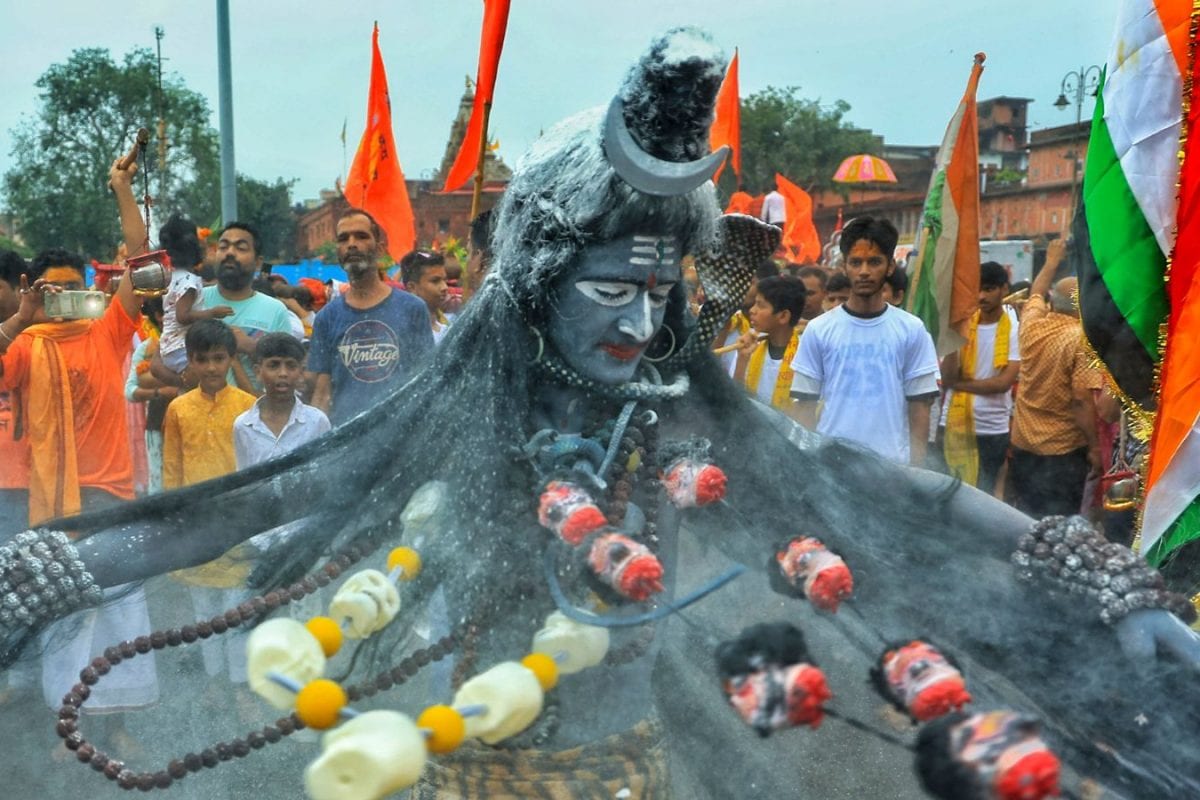

The Kanwar Yatra, an annual pilgrimage dedicated to Lord Shiva, is set to commence on July 11, 2025, coinciding with the beginning of the holy month of Shravan. Millions of devotees, known as Kanwariyas, will embark on this journey to collect holy water from the Ganges River, primarily from pilgrimage sites like Haridwar, Gaumukh, and Gangotri. This holy water, known as Gangajal, is then carried back to their hometowns and offered at local Shiva temples. The Yatra typically continues until July 23rd, coinciding with Sawan Shivratri, though some traditions extend the pilgrimage until August 9th or 23rd.
In preparation for the massive influx of pilgrims, authorities have outlined comprehensive guidelines to ensure a secure and organized Yatra. This includes enhanced security measures, traffic and crowd management protocols. Several restrictions are also being put in place to maintain order and respect the religious sentiments associated with the pilgrimage.
One of the key directives issued by the Uttar Pradesh government is the prohibition of carrying certain items that could potentially cause harm or disruption. Specifically, baseball bats, hockey sticks, and iron rods are banned. This measure aims to prevent any untoward incidents and ensure the safety of all participants. Additionally, the use of DJs with loud music is also prohibited, to maintain a peaceful and spiritual atmosphere throughout the pilgrimage.
Beyond these restrictions, the Uttar Pradesh government has also prohibited the open sale of meat along the Yatra route and banned the display of arms and ammunition. Shopkeepers have been instructed to display their names, and authorities have been directed to take strict action against those attempting to disrupt law and order. These measures are intended to create a harmonious environment and prevent any activities that could hurt religious sentiments.
To further enhance security, CCTV cameras will be installed along the entire pilgrimage route, with feeds accessible on mobile devices and at control room headquarters. Drone surveillance will also be utilized to monitor crowded places, roads, ghats, and bridges, providing real-time information to authorities for effective crowd management and disaster response.
The Kanwar Yatra routes are steeped in tradition and meaning, with pilgrims commencing their journey from spiritually significant locations such as Haridwar, Gaumukh, and Gangotri. National Highway 58 serves as a primary artery, connecting these holy sites to various parts of India. Along the way, designated stops provide pilgrims with places to rest, refresh, and engage in rituals. Popular routes include Haridwar to Neelkanth Mahadev, Sultanganj to Baidyanath Dham, Gaumukh to Kashi Vishwanath, and Delhi-NCR to Rishikesh.
Participants in the Kanwar Yatra, known as Kanwariyas, are expected to adhere to specific rules during their journey. These include maintaining purity in thoughts, words, and actions, refraining from alcohol, tobacco, and other intoxicants. Once the Yatra begins, the water-filled Kanwar must not be placed on the ground; if it is, the devotee must start the journey afresh. Pilgrims must also bathe before touching the Kanwar again after relieving themselves and avoid contact with leather items during the Yatra.
The Kanwar Yatra is more than just a physical journey; it's a transformative experience of faith, unity, and spiritual growth. By following the guidelines, respecting the environment, and preparing thoughtfully, devotees can ensure a safe, fulfilling, and spiritually enriching pilgrimage.